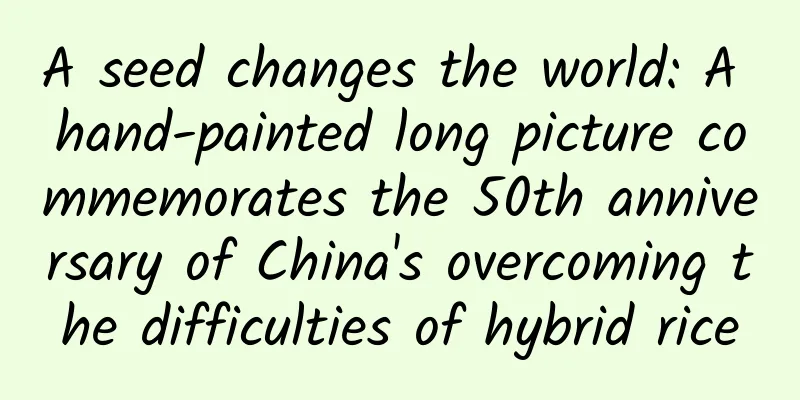White goods are weak in the basic market, Hisense home appliances are big but not strong

|
1 Hisense, a well-known Chinese home appliance brand, has two listed companies in China, namely Hisense Visual Technology and Hisense Home Appliances, which are often confused by the public. Among them, Hisense Visual is a listed company of Hisense Group specializing in TV products, while Hisense Home Appliances is a listed company specializing in white goods such as air conditioners, refrigerators and washing machines. Since TV is the dominant category of Hisense Group and white goods are relatively weak, Hisense Visual has received more attention in the capital market, while Hisense Home Appliances has long been forgotten by the secondary market. However, Hisense Home Appliances recently disclosed a third-quarter report that far exceeded market expectations, which attracted the attention of many investors. The financial report shows that Hisense Home Appliances achieved operating income of 57.026 billion yuan in the first three quarters of 2022, a year-on-year increase of 13.9%; and achieved a net profit of 1.07 billion yuan, a year-on-year increase of 15.48%. Among them, in the third quarter, Hisense Home Appliances achieved operating income of 18.719 billion yuan, a year-on-year increase of 6.09%; net profit was 450 million yuan, a year-on-year increase of 44.55%; non-net profit was 350 million yuan, a year-on-year increase of 54.5%. Since 2021, the white goods industry has been deeply affected by a variety of negative factors such as rising raw material prices and the decline in real estate. The demand for products such as air conditioners, refrigerators, and washing machines has continued to be sluggish, and the operating performance of listed companies has generally been under pressure. In the third quarter, the revenue growth rates of the three major white goods giants, Midea Group, Gree Electric Appliances, and Haier Smart Home, were 0.20%, 6.77%, and 8.6%, respectively, and the year-on-year growth rates of net profits were 0.33%, 10.50%, and 20.3%, respectively. Compared with the three giants of white goods, Hisense Home Appliances performed well in the third quarter, especially the company's net profit growth rate stood out from the crowd. This was mainly due to the recovery of the company's gross profit margin, the doubling of Hisense Hitachi heat pump sales and the reduction of losses in the three electricity companies. On the one hand, benefiting from the decline in raw material prices, Hisense Home Appliances' gross profit margin rebounded to 22.98% in the third quarter, an increase of 1.35 percentage points year-on-year. This is also the fourth consecutive quarter that the company's net profit has increased month-on-month since the fourth quarter of 2021. In comparison, Midea Group's net profit in the third quarter rebounded slightly from the previous quarter, but was still in a downward trend year-on-year; Haier Smart Home's gross profit margin in the third quarter was in a downward trend from the previous quarter. Only Gree Electric Appliances and Hisense Home Appliances remained consistent, with gross profit margins increasing both year-on-year and month-on-month in the third quarter. In fact, in addition to the common factor of falling raw material prices, the difference in product structure is a key factor leading to the changes in gross profit margins of the above four white goods companies. Affected by weather factors, the sales volume of air-conditioning products increased rapidly in the third quarter. Gree Electric's air-conditioning products accounted for 70%, and its gross profit margin rebounded most significantly; Hisense Home Appliances has central air-conditioning business in addition to household air-conditioning, and also benefited from the hot sales of air-conditioning products. In addition, the sales of Hitachi central air conditioning heat pumps was also a highlight of Hisense Home Appliances' third quarter performance. Against the backdrop of the intensifying energy crisis in Europe, overseas demand for air source heat pumps has risen sharply, greatly stimulating the high growth of my country's air source heat pump exports, and Hitachi's central air conditioning heat pump export business has doubled. Finally, the continued turnaround of Japan's Sanyo business also supports Hisense Home Appliances' profits. In March 2021, Hisense Home Appliances planned to acquire a controlling stake in Japan's Sanyo for RMB 1.3 billion to expand its automotive air-conditioning compressor and automotive air-conditioning industries. In 2021, Hisense Home Appliances recognized an investment loss of RMB 100 million due to the consolidation of Japan's Sanyo. Since 2022, Japan's Sanden has continued to turn losses into profits. According to Sanden Holdings' financial report, from January to June 2022, the company achieved an operating profit of -3.458 billion yen (about -173 million yuan), compared with a loss of 7.516 billion yen (about 375 million yuan) from April to September 2021. Guotai Junan Research believes that Sanden's net loss in the third quarter is expected to be reduced from a loss of more than 80 million yuan in the same period last year to less than 50 million yuan. Overall, with the three favorable factors of rising gross profit margin, reduced losses in the three-electric business and high growth in heat pump exports, Hisense Home Appliances' profitability recovered in the third quarter, and its net profit growth rate ranked among the top in the white appliance industry. However, through vertical comparison, Hisense Home Appliances' gross profit margin in the first three quarters was still significantly lower than that of Haier Smart Home, Gree Electric Appliances and Midea Group, and was also at a relatively low level in the entire white appliance industry. In addition, against the backdrop of a doubling of heat pump exports, Hisense Home Appliances' revenue in the third quarter only grew by single digits, indicating that the company's white goods business is not optimistic. The recovery in the third quarter's performance alone does not seem to change the inherent problems of Hisense Home Appliances' main business being weak in growth and being big but not strong. 2 From Kelon Electric, to Hisense Kelon, and then to the current Hisense Home Appliances, the development history of Hisense Home Appliances is a history of asset mergers and acquisitions and restructuring of listed companies with Chinese characteristics. Hisense Home Appliances was formerly known as the Zhujiang Refrigerator Factory, which was established in Shunde, Guangdong in 1984. Its Rongsheng refrigerators were among the earliest well-known refrigerator brands in China. In 1992, the Zhujiang Refrigerator Factory completed its restructuring and was renamed Kelon Electric, with its main businesses being Kelon air conditioners and Rongsheng refrigerators. It was later listed on the Shenzhen Stock Exchange in 1999. In 2007, Hisense Air Conditioner and Kelon Electric merged to form Hisense Kelon. In 2010, Hisense Group injected its white goods business into Hisense Kelon. So far, Hisense Home Appliances has four "Chinese famous brands" including Hisense Air Conditioner, Hisense Refrigerator, Kelon Air Conditioner and Rongsheng Refrigerator, and its leading products cover refrigerators, household air conditioners, washing machines and other fields. However, Hisense Home Appliances' multi-brand development has not only failed to achieve the effect of "1+1 is greater than 2", but has also fallen into the dilemma of multi-brand internal friction. Data shows that from 2010 to 2015, Hisense Home Appliances' operating income increased from 18.489 billion yuan to 23.472 billion yuan, while its net profit fell from 585 million yuan to 580 million yuan. In five years of development, its net profit has shrunk by 5 million yuan. In 2018, as the Kelon brand became increasingly depressed, Hisense Kelon was renamed Hisense Home Appliances, and subsequently acquired European home appliance brands such as Gulloni and Asko. As of now, Hisense Home Appliances owns eight major brands, including Hisense, Rongsheng, Kelon, Hitachi, Kelon, gorenje, ASKO and SANDEN. Its main business covers refrigerators, central air conditioners, household air conditioners, freezers, washing machines, commercial cold chain, kitchen and bathroom products. However, Hisense, which claims to have eight major brands, still cannot hide its predicament of being "strong on the outside but weak on the inside". In the field of air conditioners, with the consolidation of the duopoly of Gree and Midea, Hisense and Kelon are gradually marginalized; in the field of refrigerators, Haier and Casarte are developing steadily, Midea refrigerators are rising rapidly, and Hisense refrigerators are gradually weakening; and in the field of washing machines, Hisense brands have not entered the top ten in the industry, and are even less impressive. In fact, from an industry perspective, the concentration of China's white goods market has reached a very high level, and the market is basically in a multi-oligopoly stage. According to the data from the Forward-looking Economic Research Institute, in the first half of 2022, the online CR3 of refrigerators was 68.4%, the online CR3 of air conditioners was 70.4%, and the online CR3 of washing machines was 73.7%; in the offline market, the offline CR3 of refrigerators was 62.4%, the offline CR3 of air conditioners was 85.8%, and the offline CR3 of washing machines was 67.9%. Except for Rongsheng refrigerators, none of Hisense's brands entered the top three in the industry. Central air conditioning is almost the only bright spot of Hisense Home Appliances. In 2003, Hisense Group and Hitachi Air Conditioning jointly established Hisense Hitachi, in which Hisense Home Appliances owns 49% of the shares of the joint venture. In 2019, Hisense Home Appliances acquired another 0.2% of the shares of Hisense Hitachi, increasing its shareholding ratio from 49% to 49.2%, and will include Hisense Hitachi in the scope of consolidated financial statements. According to different working modes, central air conditioners can be divided into multi-split, unit, air-cooled screw, water-cooled screw, and centrifugal central air conditioners. Among them, multi-split central air conditioners have the advantages of high cost performance, low noise, and low energy consumption. The market penetration rate has been increasing in recent years. In 2021, the domestic multi-split central air conditioner market size was 68.97 billion yuan, a year-on-year increase of 32.1%. From the perspective of market segment competition, Hisense Hitachi has become the leader in the domestic market for multi-split units. According to data from Industry Online, Hisense Hitachi's share of the domestic market for multi-split units reached 21% in the first half of 2022, ranking first in the industry. In a sense, the consolidation of Hisense Home Appliances with Hitachi has brought the company a second growth curve, but it has also caused the company's operating performance to be heavily dependent on Hisense Hitachi. Data shows that during the period 2016-2021, Hisense Home Appliances' total net profit was 8.826 billion yuan, of which 5.335 billion yuan came from Hisense Hitachi. Based on this calculation, Hisense Hitachi's contribution to Hisense Home Appliances' profits has exceeded 60% in the past six years. The semi-annual report shows that in the first half of 2022, Hisense Home Appliances achieved a net profit of 620 million yuan, a year-on-year increase of 0.79%. Among them, Hisense Hitachi achieved a net profit of 1.289 billion yuan, contributing 633 million yuan to Hisense Home Appliances' net profit. It is not difficult to see that without the profit contribution of Hisense Hitachi, Hisense Home Appliances' other businesses would still be in a loss in the first half of the year. 3 Perhaps the success of Hisense Hitachi has allowed Hisense to taste the joy of external integration and development. In 2021, Hisense Home Appliances once again acquired Japan's Sanden Holdings and officially entered the automotive thermal management business. According to data, Japan Sanden Holdings was established in 1943 and has been engaged in the production and sales of automotive air conditioners and compressors since 1970. In 1981, it developed the world's first automotive air conditioner scroll compressor and successively established production bases in the United States, Singapore and Europe. So far, the company's automotive products include compressors, heating, ventilation and air conditioning units (HVAC), heat exchangers, electric coolant heaters, air conditioning pipes and heat pump systems. According to the data from the China Research Institute of Industry, the suppliers with the largest market share in automotive air conditioners include Denso, Sanden, Halla, Auteco and Valeo. Among them, Sanden's automotive air conditioner market share is 21%, ranking second in the industry. However, due to external environmental shocks and its own poor management, Sanden Holdings has been in trouble in recent years. Data shows that from fiscal year 2018 to 2020, Sanden Holdings' revenue continued to shrink and its net losses continued to increase. In March 2021, Hisense Home Appliances announced that it had signed a "Share Purchase Agreement" with Japan's Sanyo Holdings. According to the agreement, Hisense Home Appliances invested a total of 1.302 billion yuan to obtain approximately 75% of the voting rights of Sanyo Holdings and became its controlling shareholder. According to the data disclosed in the purchase agreement, from April 1 to December 31, 2020, Sanyo Holdings achieved operating income of 94.496 billion yen (approximately 5.747 billion yuan) and a net profit of -17.251 billion yen (approximately -1.049 billion yuan), which was in a serious loss state. Data from the 2021 annual report showed that the net profit of Sandy Power Co., Ltd. of Japan in 2021 (from the date of purchase to the end of the year) was -134 million yuan, and Hisense Home Appliances thus confirmed an investment loss of approximately 100 million yuan. According to Hisense Home Appliances, since the merger began in June last year, the company has sent a special project team to Sandian, including financial and human resources, to carry out a series of integration of Sandian. At the same time, it has also restored many of Sandian's previous customer relationships overseas, and has achieved certain results. According to the financial report of Sanden Holdings, the company achieved an operating profit of -3.458 billion yen (about -173 million yuan) during the period from January to June 2022, turning a loss of 7.516 billion yen (about 375 million yuan) from April to September 2021. In this regard, Hisense Home Appliances stated in its semiannual report that the company achieved overall stability in the operating status of the three major companies in the first half of the year through measures such as adjusting the supply chain and production plans. Not only have the revenue scale and profitability in the Americas and Asia regions improved, but the cost and expenses in the European region have also been effectively controlled. However, the temporary reduction in losses of Japan's Sanden does not mean a real turnaround. From the perspective of the main business, the synergy between the home appliance business and the thermal management of new energy vehicles is not high. If central air conditioners and household air conditioners can still be coordinated from the perspective of channels and customers, the synergy between the automotive business and the home appliance business will definitely be greatly reduced. Therefore, it is probably difficult for Hisense Home Appliances to provide technical support to Sandian Electric, and it can only improve operating efficiency from the perspective of internal management by reducing costs. According to Guosheng Securities data, Sandian Electric has relatively redundant employees. The total number of employees in previous years remained at nearly 14,000. After layoffs in 2019, the number of employees was around 9,000, but the sales and management expense rate remained high, with an overall expense rate of nearly 20%. Obviously, layoffs, cost reduction and efficiency improvement can improve a company's profitability and financial report data in the short term, but they often cause significant damage to corporate culture. In addition, in the highly competitive high-tech field, technological innovation must tolerate a certain amount of cost redundancy, and excessive cost reduction often leads to damage to the company's long-term interests. However, the acquisition of Sanden still gave the stagnant Hisense home appliance industry a new growth space, and brokerage firms are also willing to view Sanden's automotive air conditioning and thermal management business as Hisense's next growth curve. However, whether Sanden can become another Hisense Hitachi will only be answered by time. As a winner of Toutiao's Qingyun Plan and Baijiahao's Bai+ Plan, the 2019 Baidu Digital Author of the Year, the Baijiahao's Most Popular Author in the Technology Field, the 2019 Sogou Technology and Culture Author, and the 2021 Baijiahao Quarterly Influential Creator, he has won many awards, including the 2013 Sohu Best Industry Media Person, the 2015 China New Media Entrepreneurship Competition Beijing Third Place, the 2015 Guangmang Experience Award, the 2015 China New Media Entrepreneurship Competition Finals Third Place, and the 2018 Baidu Dynamic Annual Powerful Celebrity. |
<<: 6 reasons why Apple Pay will accelerate its growth
>>: Family love brings happiness to the TV version of "Oh Dad, Come Chase Me"
Recommend
Group buying community operation and traffic generation techniques!
This article mainly discusses various methods of ...
This feature of Huawei's new flagship is super powerful!
Last night Beijing time, Huawei held a press confe...
Where does the human tissue removed during surgery go?
【Written at the end】 For most people, the most li...
From incoming call reminders to "PUBG cheats", what has mobile phone vibration experienced over the years?
In 1996, Motorola launched the flip phone Motorol...
The popularity of "Honghuang Girl" is a microcosm of the era of sports fission
This Olympics was a bit dull, and the audience wh...
I spent thousands of dollars on a 5G phone, but why is the Internet speed still so slow? The answer is out
I believe many people have encountered this probl...
Deconstruction: The logic behind the design of Toutiao
The emergence of Toutiao has subverted traditiona...
In "Nezha 2", Ao Bing defeated Shen Gongbao's father with this "cold" knowledge! Cultivating immortals also requires science!
In "Nezha: The Devil Boy Conquers the Dragon...
Caocao talks about movies: a comprehensive course on movie commentary
"Cao Cao Talks about Movies: A One-stop Guid...
Boom! It turns out that sound can be seen?
Around 00:07 on November 3 A loud noise suddenly ...
Payment system design: How does Yingke guide users to pay for the anchors step by step?
Two days ago, Fu Yuanhui made her first live broa...
Tips for setting up a Baidu information flow account!
If information flow is spending money to buy traf...
How to effectively deliver short video information flow? Analysis of Tik Tok gameplay
This article mainly introduces the preparations b...
Wang Qiong's tea art video tutorial "11 Tea Cultivation Courses on Body and Qiyun" teaches you to be a smart goddess
Wang Qiong's tea art video tutorial "11 ...
Electric Technology Car News: Can Jiangxi Isuzu D-MAX continue to be popular with its avant-garde design and reasonable interior design?
Since being introduced into China in 2014, Jiangx...









